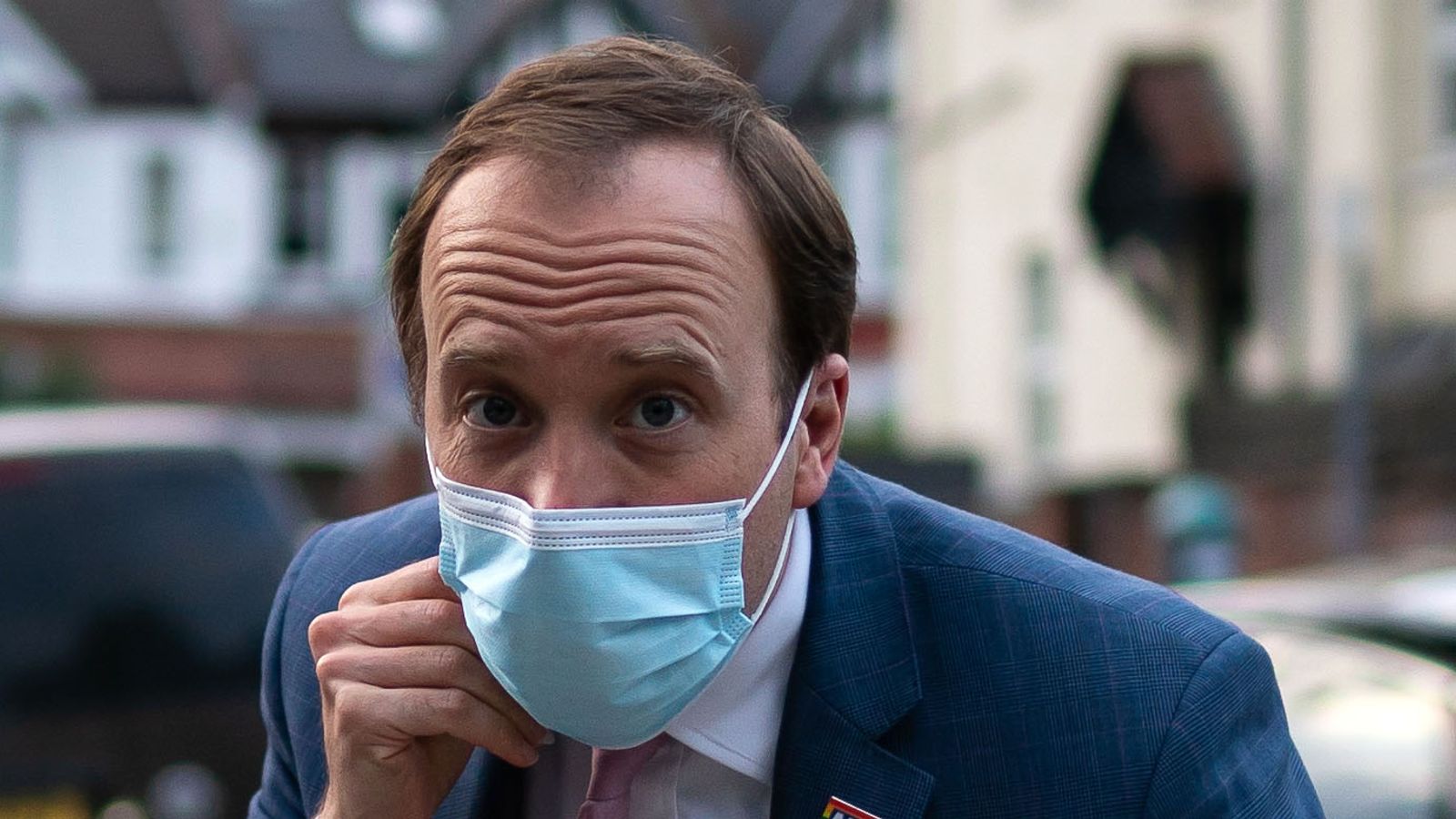When it comes to the government’s handling of care homes during the pandemic, one key fact is not in dispute.
From mid-March to mid-April last year thousands of elderly patients were discharged from hospitals into care homes without being tested for COVID-19, and infections spread amongst the most vulnerable as a result.
The key question raised by Dominic Cummings’s explosive testimony to the health and science select committees, however, is whether Health Secretary Matt Hancock had told Boris Johnson this would not be the case.
Mr Cummings told MPs on Wednesday: “We were told categorically in March that people would be tested before they went back to care homes. We only subsequently found out that that hadn’t happened.
“The government rhetoric was we put a shield around care homes – it was complete nonsense”.
Today Mr Hancock was asked repeatedly in the House of Commons whether he had indeed told Downing Street that people being discharged had been tested.
He argued the government had followed clinical advice, and that the Scottish government had also struggled to prevent the spread in the care sector, but did not respond to the main question directly.
Instead he said in broad terms: “These unsubstantiated allegations around honesty are not true. I have been straight with people in public and in private throughout.”
The prime minister was also asked whether Mr Cummings’s account was accurate – and that MrHancock had misled him.
Mr Johnson, like the heath secretary, did not directly address the question, saying: “I think that of course what happened in care homes was tragic, but we did everything we could to protect the NHS, to minimise transmission, with the knowledge that we had.”
In the absence of a specific response from Mr Hancock or Mr Johnson to the central allegation, it is worth looking back at the record to see whether Mr Cummings’s professed surprise at the lack of testing for people being moved from hospitals to care homes stands up to scrutiny.
On 25 February the government published guidance saying that there was “currently no transmission of COVID-19 in the community” and said “it is therefore very unlikely that anyone receiving care in a care home or the community will become infected”.
This guidance was withdrawn on 13 March, the day on which Mr Cummings claims he realised the government would need to change strategy and urgently draw up plans for a national lockdown.
On 17 March NHS England Chief Executive Sir Simon Stevens wrote a letter to all NHS trusts asking them to “urgently discharge all hospital inpatients who are medically fit to leave”, including those who would be discharged to a care homes.
There was no mention of the need for testing in this letter.
On 25 March Labour MP Peter Kyle asked a question of the prime minister in parliament about how infections had spread rapidly through a care home in his constituency.
In response to Mr Kyle’s question about when testing would be available in the care sector more broadly, Mr Johnson indicated he was aware the lack of testing for care home residents was an issue, saying: “We want to roll that out as soon as we possibly can”
Further government guidance issued on 2 April said that patients being discharged to care homes should be isolated if they were showing COVID symptoms, but stated clearly that a negative test was not a requirement prior to their transfer.
At the Downing Street COVID briefing on 5 April questions were asked of both Mr Hancock and deputy chief medical officer Jenny Harries about when routine testing would be available in care homes. The answers provided by Dr Harries indicated that testing capacity at that time meant priority was being given to patients in hospitals, but that care homes and prisons were on the priority list.
By 7 April further reports of the dire situation in care homes were starting to emerge. Sky’s Lisa Holland spoke to a care home owner in Devon who said he was being asked to admit COVID-positive patients from hospitals.
Although a number of NHS trusts are understood to have started testing where possible before transferring patients, it was not until 15 April that the government’s ‘adult social care action plan’ was published and required all those discharged to care homes to be tested.
At a Downing Street COVID briefing on 16 April, chief medical officer Chris Whitty confirmed 92 care homes had reported outbreaks within 24 hours, and said he would like to see more testing available to the sector.
Given this timeline there will be questions as to how it could have been the case that Mr Cummings and the prime minister could have been unaware that testing was not being carried out.
One possible explanation that could be derived from Mr Cummings’s own testimony is that this period coincided with both he and the prime minister’s bouts with COVID.
Boris Johnson first went to hospital on 6 April after testing positive on 27 March. He was admitted to intensive care on 7 April. He did not resume his full duties until 27 April.
Mr Cummings himself travelled to Durham on 27 March, not returning to Downing Street until 14 April.
Speaking to the committee yesterday, Mr Cummings said: “When he [Boris Johnson] came back after being ill he said: ‘What on earth has happened with all these people in care homes? Hancock told us in the Cabinet Room that people were going to be tested before they went back to care homes, what the hell happened?’.”
On 15 May, a few weeks after the prime minister’s return to work, Mr Hancock used a Downing Street COVID briefing to argue the government could not have done more to protect care homes.
"Right from the start we've tried to throw a protective ring around our care homes. We set out our first advice in February… we've made sure care homes have the resources they need" says Health Secretary, Matt Hancock.
Read the latest on #COVID19: https://t.co/p5N3QJo90p pic.twitter.com/ey4B9zZ5Tg
“Right from the start we’ve tried to throw a protective ring around our care homes. We set our first advice in February, and as the virus grew we strengthened it throughout. We’ve made sure care homes had the resources they need to control the spread of infection,” he said.
The question now is whether Matt Hancock’s appearance in front of the same joint select committee in two weeks’ time will see him tackle the accusation he had misled Number 10, or whether that issue is pushed back further to the public inquiry due to launch next spring.






















